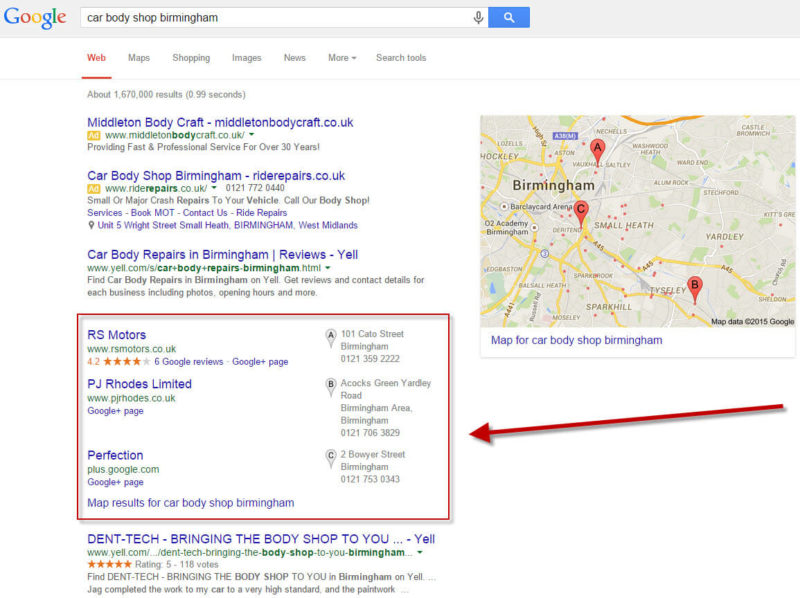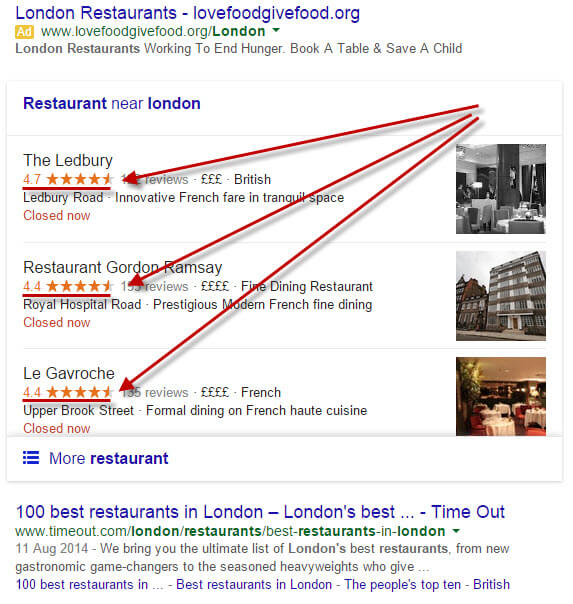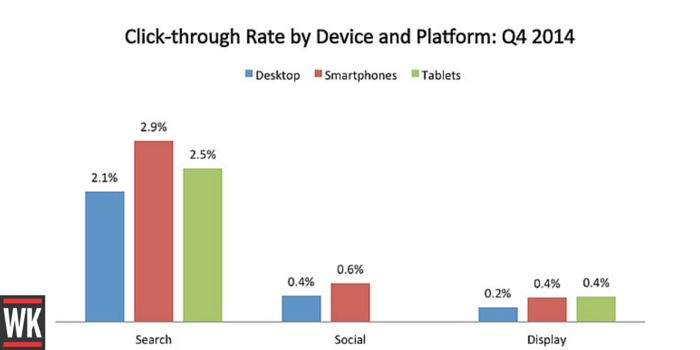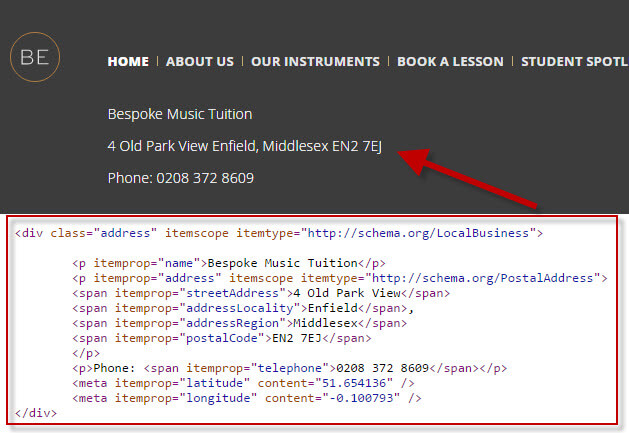Thursday, April 4, 2019
How to do local seo
How to do local seo
Local SEO: How To Rank Your Local Business
Columnist Matthew Barby shares this handy primer on local search engine optimization.
If you own (or do online marketing for) a local business, you understand the challenges that come with this kind of campaign vs. that of a non geo-specific brand.
Local SEO is a lot different from your average SEO campaign, and the local search results are changing more rapidly than any other.
The above chart shows a breakdown of the weighting of various ranking factors within local SEO campaigns. One of the things to note here is that whilst there are a few slightly different factors compared to the usual SEO campaign (i.e. External Loc. Signals and My Business Signals), links and on-page SEO factors still play a huge part. The only difference is that the type of links you’ll want to focus on will be a lot different.
I’m going to talk you through some of the techniques that you can implement to get results from your local SEO campaigns.
First Things First
Before you go ahead and start chasing links, there’s a lot of up-front work needed on your website to ensure that you’re able to get the best possible results, especially if you want to rank within the local pack listings (see below):

To rank within the above types of listings, you’ll rely less on the link building side of things, and more on local NAP citations, local reviews and My Business signals.
Google My Business
If you haven’t already, you’ll need to claim your Google My Business page.
I’m not going to go into all the details of setting it up because there are tons of articles that explain this process, like this one or this one.
All you need to know is that once you’ve set it up, you should include the following:
- Add a long, unique description that’s formatted correctly and includes links.
- Choose the correct categories for your business.
- Upload as many photos as possible.
- Add a local phone number to your listing.
- Add your business address that’s consistent with that on your website and local directories.
- Upload a high-resolution profile image and cover photo.
- Add your opening times/days (if relevant).
- Get real reviews from customers (I’ll come onto this).
NAP (Name, Address, Phone Number)
Consistency is key here. You need to ensure that you have your full NAP across your whole website (i.e. every page). Furthermore, you must use the exact same details/format when you mention your address on other websites (i.e. local citations).
You’ll also want to use Schema.org markup on your NAP to give the search engines all they need to display your company information correctly.
The screenshot above shows how a local business in London has placed their NAP in the footer of their website, marking it up with Schema.org data markup.
Here’s the code that you can adapt to your own website:
<div itemscope itemtype="http://schema.org/LocalBusiness"> <p itemprop="name">COMPANY NAME</p> <p itemprop="address" itemscope itemtype="http://schema.org/PostalAddress"> <p itemprop="streetAddress">ADDRESS LINE 1</p> <p itemprop="addressLocality">CITY</p>, <p itemprop="addressRegion">REGION</p> <p itemprop="postalCode">POSTCODE/ZIP</p. <p itemprop="telephone">PHONE NUMBER</p> <meta itemprop="latitude" content="LATITUDE" /> <meta itemprop="longitude" content="LONGITUDE" /> </div>
All you need to do is change the text in bold to your own details — simple.
For a more detailed look at NAPs, check out this article from Jayson DeMers.
Local Reviews
Local reviews have a direct impact on local search rankings, so you’ll want to spend some time acquiring them.
It’s worth mentioning that this doesn’t just mean Google reviews. You’ll also want to focus on getting reviews on your Yelp page (they’re used by Apple maps), along with other local directories. Your first priority should be Google reviews though.

To begin with, you’ll want to capture any low-hanging fruit by getting in touch with your existing customer base and see if they’d be interested in leaving you a review. You could incentivize them for their time (maybe a discount, etc.).
Another great tip that I picked up from Greg Gifford‘s recent talk at BrightonSEO was to create a page on your website that gives instructions to your customers on exactly how they can review your business (i.e. yourwebsite.com/review-us/). You won’t believe how effective this is when it comes to getting in touch with customers, especially the non-technical ones!
You may want to check out the following article for more in-depth strategies for review acquisition, as well as this one from the Shopify blog.
Local On-Page SEO Factors
On-page SEO for local businesses conforms to some pretty old school SEO tactics. There’s quite a large weighting towards the on-page content in the local search listings, so it’s important that, where possible, you squeeze the most value out of your content.
Again, I’m not going to go into tons of detail on this, because you could just read this, but I’ll break it down into a few important bullet points:
- Try to add your City/Region, plus a relevant keyword, within your landing page title tag.
- Try to add your City/Region, plus a relevant keyword, within your landing page H1 tag.
- Try to add your City/Region, plus a relevant keyword, within your landing page URL.
- Try to add your City/Region, plus a relevant keyword, within your landing page content.
- Try to add your City/Region, plus a relevant keyword, within your landing page image ALT attributes.
- Embed a Google map with your business marker into your landing page.

Image source: Aran Sweaters Direct
Alongside this, you’ve got to ensure that your website is mobile-friendly. This is becoming even more important with Google’s mobile search update.

Image source: eCO2 Greetings eCards
Local Link Building & Citations
Link building within local SEO campaigns is incredibly important and it’s also something that’s often overlooked.
Compared to standard SEO campaigns, local SEO relies much more on links from other local websites that are really relevant to your business. It’s less about getting links from high authority websites (although that obviously helps) and more about getting links from websites local to you that are talking about similar things to what you do.
This means that local directories are a useful resource for link building, especially when it comes to building citations.
“A citation is an online reference to your business’s name, address and phone number (NAP).” (source)
These citations don’t even need to be linked, as long as they’re referencing your business NAP consistently in the same way.
You can use a tool like Bright Local to check out any existing citations you have and then update them so that they’re all consistent. You can also use the tool to track your competitors’ citations and add your own to the same websites.
There are a number of ways to get local citations, but here’s a few that I use:
- Use a service like WhiteSpark and get them to find and upload local citations for you.
- Go through the extensive list of citations on the Moz website and manually submit your citations.
- Use a tool like Ahrefs, Majestic or Open Site Explorer to run competitive link research and find citations that your competitors have gained.
- Set up alerts through Mention or Google Alerts to track new mentions of your competitors’ NAP listing.
Local Link Building Strategies
There are lots of way to go about earning/building links, and if you want a load of them, check out my link building strategies guide. For the purpose of this article I’m going to focus on acquiring links that are really effective within local link building campaigns.
Here are a few to get you started:
- Go to Meetup.com and search for a list of local events relevant to your industry. Find those that have websites and contact them about sponsorship (most of the time you’ll only need to put on a lunch for them). If they accept, you’ll get a link from their website (local to you) and their Meetup.com page (highly authoritative, local link). Here’s an example.
- Create a local resource from public data (here’s 30 different data sources) and reach out to local press to get coverage. That’s exactly what Krystian Szastok did and he got some amazing results (you really should read this case study).
- Run your own local meetup or event and bring through links from the local event page.
- Sign up to press request services to get quoted in local publications (huge potential for high authority, local links).
- Run an AMA on Reddit (within a relevant subreddit to your industry) and within other local communities.
- Line up interviews and columns within relevant online publications.
- Give a discount to local organizations for your products/services in exchange for a linked mention on their website.
- Enter local awards (or start your own if there aren’t any!).
- Spend time dedicated to local PR outreach to get online and offline coverage in local news.
- Run regular competitive link research and capitalize on any new opportunities that your competitors have gained.
- Offer scholarships (you get links from local universities) or offer jobs to students (you can get links from their careers pages).
That should be enough to get you started!
SERP Click Through Rate
Another ranking signal that’s being talked about a lot more is CTR from the SERPs.
It’s no wonder that this is such a strong signal because it’s used as one of Google’s core Quality Score measures within their Adwords platform. It makes sense that they would measure the user experience that searchers are getting with this metric.
Moz’ Rand Fishkin carried out an interesting experiment with his Twitter followers to see the impact of a large increase in SERP CTR on search rankings. The results were pretty huge — he saw several position ranking increases in less than an hour!
I’ve been running some similar experiments over the past few months and found that it does earn some short-term wins, but CTR has to be consistently high to ensure that rankings will stabilize. You also need to reduce bounces from search, as this is a negative signal to Google.
To maximize your SERP CTR, try the following:
- Ensure you have Schema.org markup set up, with reviews (if relevant).
- Make your title tag as readable and relevant as possible.
- Have a detailed meta description, relevant to what users will be searching for.
- Use Twitter/Facebook/Google+/Reddit to split test titles to measure CTR from social and then take those findings to adapt your SERP snippet.
Here’s a really good resource that looks at increasing SERP CTR.
TL;DR
- Get your Google My Business page set up.
- Optimize all of your landing pages with local keyword data.
- Ensure your NAP listings remain consistently across the web.
- Generate genuine reviews from your customers on Google and Yelp.
- Optimize your search engine snippets.
- Focus on localized link building.
Subscribe to:
Post Comments
(
Atom
)
-
ChomChom Roller Dog Hair Remover, Cat Hair Remover, Pet Hair Remover Revlon One-Step Hair Dryer & Volumizer Hot Air Brush, Black ...
-
10 Remedies And 8 Exercises To Get Rid Of A Double Chin Healifty V Face Band V Line Bandage Breathable Face Lift Belt Anti Wrinkle Ch...
How to moisturize vagina
How to moisturize vagina Vaginal Dryness: Causes and Moisturizing Treatments IN THIS ARTICLE Causes Diagnosis Medication Oth...







No comments :
Post a Comment